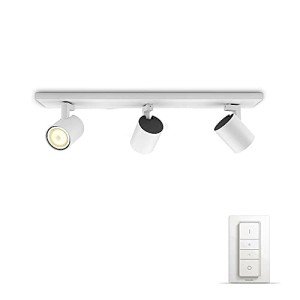Industrial Lamps in the UK: Illuminating Industries and Workspaces
In a period where efficient lighting solutions play a critical function in boosting performance and security in numerous industrial settings, industrial lamps have actually become essential tools for factories, warehouses, workshops, and more. The UK's market for industrial lighting is rapidly developing, driven by improvements in innovation, a growing concentrate on energy performance, and strict security policies. This short article explores the various types of industrial lamps offered in the UK, their applications, and the factors to consider that need to be made when picking the appropriate lighting services for industrial environments.
Understanding Industrial Lamps
Industrial lamps are developed specifically for use in a range of industrial settings. They offer the needed lighting while also thinking about the unique obstacles postured by such environments, including dust, wetness, high ceilings, and variable temperature levels. Industrial lamps are available in numerous kinds, consisting of LED, fluorescent, and metal halide lighting, each with its own set of characteristics and benefits.
Types of Industrial Lamps
LED Industrial Lamps:
- Description: LED (Light Emitting Diode) industrial lamps are energy-efficient, lasting, and supply excellent illumination.
- Advantages:
- Energy effectiveness (up to 80% less energy consumption)
- Long lifespan (up to 50,000 hours)
- Low heat emission
- Instant brightness with no flickering
- Applications: Factories, warehouses, and building websites.
Fluorescent Industrial Lamps:
- Description: These lamps discharge light through the excitation of gas, frequently utilized in environments requiring uniform lighting.
- Benefits:
- Good color rendering
- Economical
- Numerous shapes and sizes
- Applications: Workshops, garages, and assembly lines.
Metal Halide Industrial Lamps:
- Description: This type of gas discharge lamp produces an intense, white light and is often utilized in big spaces.
- Benefits:
- High intensity and brightness
- Excellent for sports locations, car park, and large industrial facilities
- Applications: Warehouses, filling docks, and outdoor areas.
Contrast Table of Different Types of Industrial Lamps
| Lamp Type | Energy Efficiency | Lifespan | Brightness | Application Areas |
|---|---|---|---|---|
| LED Industrial Lamps | Up to 80% | Up to 50,000 hours | Very High | Factories, Construction Sites |
| Fluorescent | Moderate | 7,000 - 15,000 hours | Moderate to High | Workshops, Garages |
| Metal Halide | Moderate | 15,000-20,000 hours | High | Warehouses, Outdoor Areas |
Choosing Industrial Lamps
When choosing industrial lamps, a number of aspects need to be considered. These consist of:
- Type of Application: Different areas have differing lighting requirements. For example, high-precision tasks might require brighter, more concentrated lighting compared to basic work space illumination.
- Energy Efficiency: With rising energy costs and environmental concerns, selecting lamps with high energy effectiveness can lead to considerable cost savings over time.
- Lifespan: Longer-lasting lamps minimize maintenance expenses and downtime, making them more suitable in busy industrial settings.
- Security Standards: Compliance with security regulations is important. Industrial lamps should be designed to stand up to harsh conditions, including wetness, dust, and impacts.
- Expense: While in advance expenses matter, the long-term cost savings attained by means of energy-efficient and lasting lamps should likewise be taken into account.
Benefits of Appropriate Industrial Lighting
- Enhanced Safety: Proper lighting minimizes the danger of accidents and injuries in industrial environments.
- Increased Productivity: Adequate lighting promotes much better exposure, aiding in the efficiency of employees.
- Cost Savings: Energy-efficient lamps lead to lower electricity expenses and less frequent replacements.
- Enhanced Quality Control: Good lighting permits better inspection processes, ultimately enhancing item quality.
Often Asked Questions (FAQs)
Q1. How do I determine the best type of industrial lamp for my facility?A1. Examine the specific lighting needs and conditions of your center. Consider Affordable Lighting UK as the jobs being carried out, the size of the area, and any regulatory requirements.
Q2. Are LED lights worth the investment in an industrial setting?A2. Yes, LED lights offer significant long-term savings due to lower energy consumption and longer life-spans, making them an affordable alternative in the long run.
Q3. Can I set up industrial lamps myself?A3. While some individuals might have the skills to set up lamps, it is often recommended to work with a qualified electrical contractor to guarantee compliance with safety requirements and local regulations.
Q4. What maintenance is needed for industrial lamps?A4. Routine assessments for damage, cleansing of light fixtures, and prompt replacement of malfunctioning lamps are important to keep ideal efficiency.
Q5. What are the current trends in industrial lighting technology?A5. Advances in smart lighting systems, consisting of IoT (Internet of Things) combination and sophisticated energy management options, are at the leading edge of industrial lighting innovation.
The right industrial lamps are vital to making sure security, productivity, and expense effectiveness in numerous industrial settings. The UK market uses a variety of lighting options, from LED lamps to fluorescent and metal halide options, each appropriate for various applications. By comprehending the features and benefits of these lighting types and taking essential factors to consider into account, organizations can make educated decisions that will illuminate their offices successfully while optimizing performance and saving costs. Investing in the right industrial lighting not only boosts total atmosphere but also cultivates a safer and more efficient work environment.

